When I started crocheting, I use to wondered how to choose yarn for crochet so that my crochet looks amazing. Yes, Crochet is a skill to turn simple yarn into patterned textiles. But apart from skill, one most important thing is the type of yarn you use for making that project. After trying different types of yarns and wool you will find that the feel, comfort, texture, and flow of every yarn is different and this will help you to select the best suitable yarn for your project.
So, How to choose Yarn for crochet? To choose the best yarn it is important to understand the factors of yarn like yarn fiber which is the material of which the yarn is made of and other factors are also important like weight, properties, texture, and color which also affect the yarn quality and type.
There are many types of wonderful yarn available in the market, selecting a yarn from so many options can be difficult and tricky as well. Selecting the best yarn is important as it can make your crochet experience smooth or frustrating. In this post, you will find handy information and learn everything about yarn and thus will guide you to choose yarn for your crochet project.
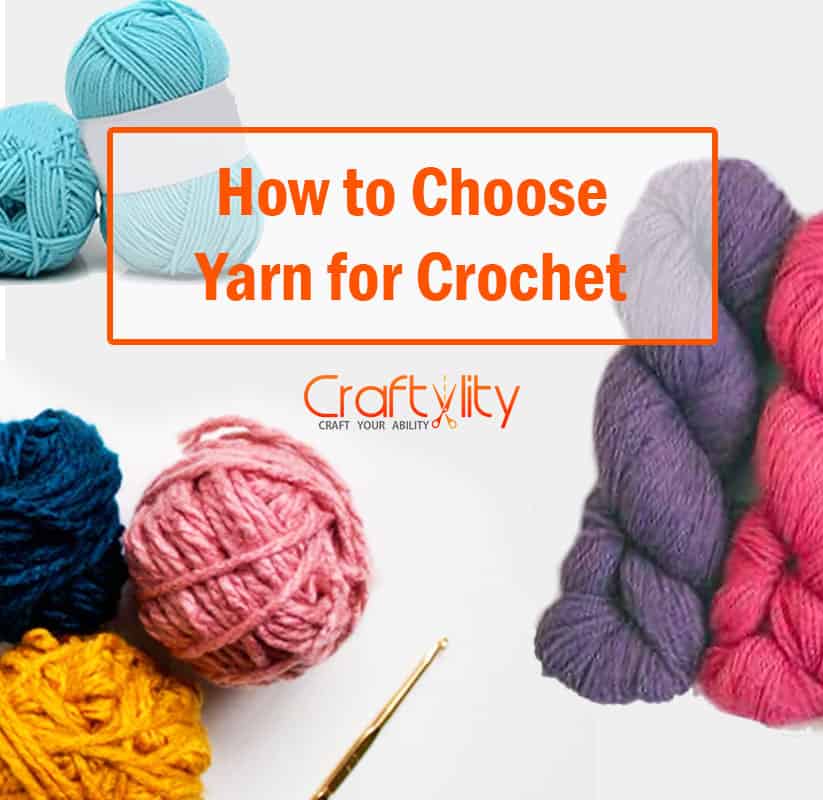
Table of Contents
What is the difference between yarn and wool?
Wool is basically a textile fiber with originated from animals like sheep, goats, or similar animals. On other hand, Yarn is a fiber made from strands (or plies) twisted together to form one thick string of material used to make fabrics, use for knitting, sewing, crochet, weaving.
What is the difference between yarn and thread?
Yarn is thicker as it is made from twisted strands, yarn is made from various materials and is used for regular projects like blankets, socks, shawls, and sweaters. On the other hand, the thread is much finer then yarn, it is made from cotton and is used for finer and delicate projects like doilies or tablecloths.
It is good to start with yarn as it is thicker and easy to learn for a beginner.
What is the difference between hank and skein? The Way Yarns came:
It is important to know how yarn comes, as it affects working with yarn. Actually, there are 4 ways a yarn can come.

- Ball: Yarn is wrapped like a ball, hence it is called a yarn ball. It is round and you can directly start working with it. The yarn can get tangle while working, to avoid this you can use a yarn bowl which will help you to keep the ball in one place.
- Cake: Yarn Cake is usually like a cylinder, flat from top and bottom. It has an end in the center, you can pull the yarn and start crocheting this makes it easier while working.
- Hank: Hank is like a large and twisted yarn ring, Generally hand-dyed yarn is sold like this. When you purchase a hank, you need to wind it into a ball or cake before you start using it. Don’t try to directly start with hank as this can tangle the entire yarn.
- Skein: Skein is similar to a ball, except it is more oval in shape. You can pull the yarn from the center and start crocheting.
How to choose yarn for crochet?
Selecting yarn for your project depends upon many factors like the texture of fiber, patterns, number of yarn ply, etc.
Below you will find the factors that will help you to choose yarn for crochet.
Types of Yarn for Crochet
The type of yarn depends upon what fiber is used to make that yarn. There are different textures of fibers and each has a different way of working. The fiber content is the most important factor to consider while selecting the yarn, do you want your project to be soft, do you want it to last for a long time, etc.
This fiber content is divided into three categories: Natural, blended, and synthetic.
Natural fibers come from natural sources like plants and animals, and Synthetic fibers are man-made.
Some Common Animal Fibers are:
Wool Yarn:
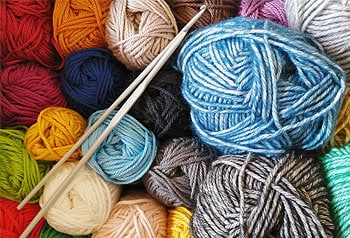
Wool Yarn is highly breathable, soft, and long-lasting. It has natural anti-bacterial properties and requires less washing as compared to other fibers. Wool is the best choice for winter clothing accessories. It is warm and will not lose shape for years. There are four types of wool yarn, those are fine wool, medium wool, long wool, and double-coated wool. But wool can be slightly itchy, especially for those who are allergic to wool.
Alpaca wool:
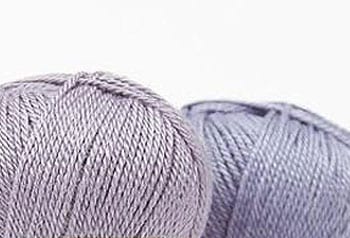
Alpaca wool is harvested from Alpaca (domesticated in South America). This wool is softer, stronger, warmer, and retains less water. This fiber is used for making many clothing such as hats, gloves, scarves, bedding but most commonly it is used for making sweaters. It is a bit costlier than regular wool as it is imported from South American. This wool is warmer and softer, and this fiber is naturally water-repellent and fire-resistant. There are two types of Alpaca wool, those are Suri and Huacaya.
Alpaca is one species but have two different types of fleece:
Huacaya produces dense, soft, crimpy fiber like small springs and is used to make clothes such as socks, mittens, and sweaters.
Suri produces silky locks like dreadlocks, it is slippery and has a more luster feel which makes it ideal for good-quality coats and shawls.
Merino Wool:
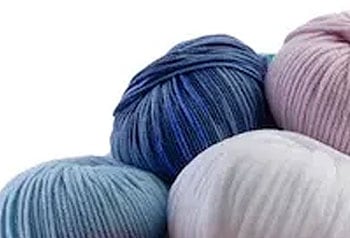
Merino wool comes from a special breed of sheep known as the Merino sheep (found in Australia). This fiber is thinner and super soft than regular wool and doesn’t cause allergic reactions. It is ideal to create winter wear and it doesn’t tend to lose shape for a long time.
The Merino is one of the most historically relevant and economically influential breeds of sheep, much prized for its wool. Read More on Wikipedia…
Cashmere wool:
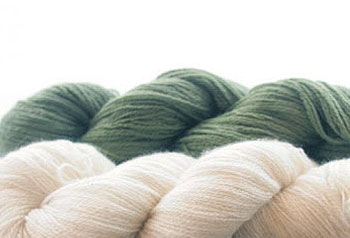
Cashmere wool is a soft wool fabric woven from cashmere goats, pashmina goats, or Kashmir goats. Cashmere fiber is extremely soft, lightweight, and is also six times finer than human hair. It is mostly used in making fabrics like sweaters, cardigans, shawls, and dresses. It can last for years without losing shape and look.
Organic Yarn:
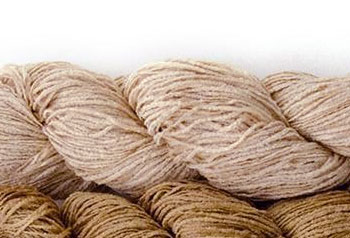
Organic yarn comes from those sheep which are not exposed to any kind of chemicals. This yarn does not come into contact with any sort of antibiotics, dips, or back lining. The sheep are usually kept healthy and happy and the procedure of getting the fiber is eco-friendly. This wool is cleaned using hot water and detergent only.
Silk:
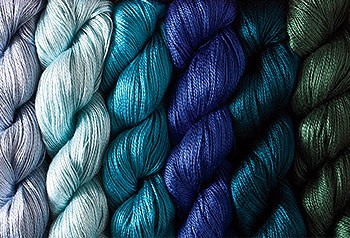
Silk Yarn is one of the shiniest and strong yarn. It is a natural protein fiber, which is obtained from the cocoons of silkworms. It comes into different types, Spun silk and reeled silk. Silk yarn is very smooth and slippery which makes it easier to work with it but you should be an advanced crocheter as if you are a beginner you can find it harder to manage the yarn and stitches.
Mohair:
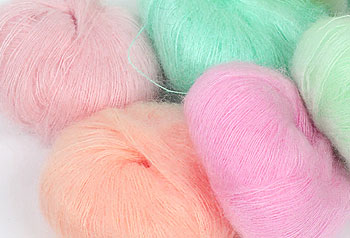
Mohair is a soft and shiny yarn that comes from the hair of the Angora goat. Don’t confuse this with Angora rabbits with produce Angora wool. Both are resilient and durable, mohair is known for its high sheen and luster and is considered a luxury fiber.
It can be worn in both winters and summer as It gives warmth in winter because of its excellent insulating properties, while in summer it’s cool because of its moisture-wicking properties. It is very good for dyeing, it is naturally elastic, flame-resistant, and crease-resistant.
Plant Fibers are:
Cotton:

Cotton yarn is soft and supple and has excellent water absorption properties. It comes from cotton plants which are grown in many parts of the world. It is strong and breathable which makes it the perfect fabric for summer wear. It is available in a variety of types. Dues to its texture, it is easy to create stitches and it also gives an excellent definition of the stitches.
Bamboo Yarn:
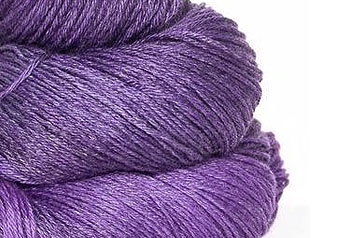
Bamboo is a natural fiber and it comes from bamboo. It is soft like silk and it has natural anti-bacteria, bacteriostasis, and deodorization functions. It also has a natural anti-UV character which appreciated. Bamboo fibers are naturally cool and breathable fiber and would be great for summer wear.
Hemp Yarn:
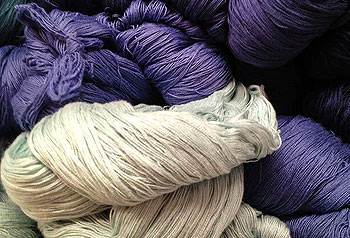
Hemp yarn is a fiber that is made from the outer long strand of hemp stalks. These fibers are spun together to create a continuous fiber that can be woven into a fabric. Hemp yarn has no stretch, and it is not as soft as wools and cotton but it produces an amazing finished project. It does not smoothly slide through fingers while working. Hemp yarn is mostly used for making coats, tote, as well as boot socks.
Synthetic Fiber Yarns:
Acrylic:
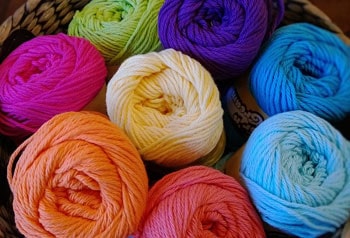
Acrylic fibers are synthetic fibers made from polymer. It is man-made and it is cheaper compared to natural fibers. If you are a beginner, this yarn is good to start with as it is cheaper than other yarns. It is less sensitive to detergents and warm water means it cleans up easily. It is durable, soft, and warm like other yarns.
Novelty yarn:
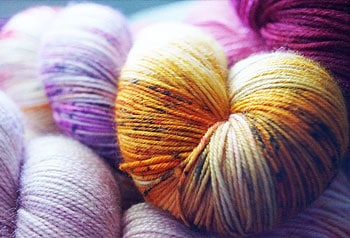
Novelty yarns come in a wide variety and made with unusual structure, features, or composition. It is man-made fibers, which are modified during production and adapts special effects such as texturizing and crimping. It is a Complex yarn that makes fabric not always smooth and uniform. It is uneven which can be thick and thin or have curls, loops, twists, and even different colored areas along their length. It is used to add interesting effects to the fabric.
Weight of yarn
When we talk about yarn weight, doesn’t mean how heavy the yarn is but it is about the thickness of the yarn strand. While purchasing the yarn, you can check the yarn label for its weight. You can customize your project by selecting different yarn weights. The look of the project can be changed by changing different yarn weights.
| Yarn Weight | Yarn Category | Needle sizes | Ideal Projects | |
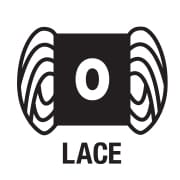 |
0-Lace: Fingering 10 count | 000-1 (US) 1.5 – 2.25 mm | Baby clothes, socks, lace | Lace yarn is very thin and often used to give a lacy appearance. |
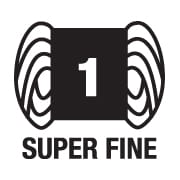 |
1-Super Fine: Sock, Fingering, Baby | 1 – 3 (US) 2.25 – 3.25 mm | Baby clothes, socks, lace | Super Fine yarn is lightweight and typically used for baby items, shawls, or sock patterns. It is best to create delicate pieces. |
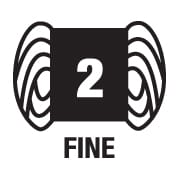 |
2-Fine: Sport, Baby |
3 – 5 (US) 3.25 – 3.75 mm |
Baby clothes, socks, lace | Fine yarn works best for items such as socks, wraps, heirloom sweaters, and other delicate accessories. It is also used for lightweight afghans. |
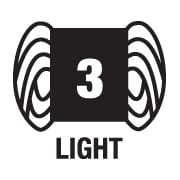 |
3-Light: Double Knit, Light, worsted |
5 – 7 (US) 3.75 – 4.5 mm |
Sweaters, Afghans, Tank tops | This yarn is slightly heavier than a fine weight yarn, this weight is used for garments and heavier baby items. |
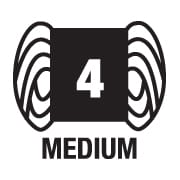 |
4-Medium: Afghan, Aran, Worsted |
7-9 (US) 4.5 – 5.5 mm |
Afghans, Sweaters, Accessories | Medium weight yarn is the most commonly used yarn. It is great for beginners and it is easy to work, approximately double the weight of DK or sport yarn, and ideal for working up afghans. |
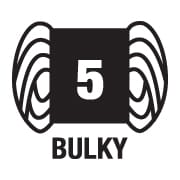 |
5-Bulky: Chunky, Craft, Rug |
9 – 11 (US) 5.5 – 8 mm |
Hats, Rugs, Afghans, Scarves | Bulky yarn is about twice as thick as medium weight. It usually works up quickly when using large needles/hooks, and it’s great to use when making sweaters, scarves, rugs, and throws. |
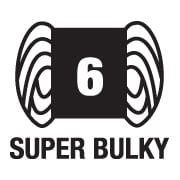 |
6-Super Bulky: Bulky, Roving |
11 – 17 (US) 8 – 12.75 mm |
Afghans, Winter accessories, Sweaters | Super bulky yarn is a thick yarn that works up quickly. It is most commonly used for afghans, sweaters, scarves, and hats. |
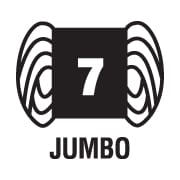 |
7-Jumbo: Roving |
17+ (US) 12.75+ mm |
Afghans, Sweaters, Rugs |
Jumbo yarn is the thickest yarn weight, it works up quickly and is great for arm knitting. |
What is the Meaning of Ply?
The term “Ply” means plied or folded. It is used to define yarn weights in the UK and AUS/NZ. Yarns are made by two or more single strands that have been twisted together.
For making ply yarns from spun strands, each strand is usually twisted in one direction and is then combined and twisted in the opposite direction. The fiber becomes firmer when both the strands are twisted in the same direction. Ply yarns provide strength for fabrics and are also used for delicate-looking sheer fabrics.
For example, Two-ply yarn is composed of two single strands and the three-ply yarn is composed of three single strands. The number that comes along with ply doesn’t necessarily determine the thickness of the yarn. You can find a thing 4-ply yarn or bulky 2-ply yarn and this depends on the thickness of the individual strand.
Additional Tips to consider:
Texture and Fibers:
If you are a beginner then use smooth yarn over textured yarn, as for beginners using textured yarn can be frustrating to work with. Also, determine the care instructions on the yarn label and how to wash them.
Weight:
Before starting the project, think about why and which projects you are planning to make. This will help you to determine the thickness of the yarn. As for lace, you can use thin yarn and for hats or shawls, you can use medium to chunky weight yarns. It is always good to go for a swatch test, select the yarn, and create a small swatch of that yarn, thus you will be able to test the texture and thickness of the project.
Color:
If you are new then it is good to use light-colored yarn rather than dark shades, as it is easier to see the stitches in lighter colors.
Price:
You can find it difficult to select the yarn from a variety of options, as every yarn is so amazing. The price of yarn varies from brand to brand and fiber to fiber. If you are a beginner, select among the affordable yarn so that you can try crochet without investing more money. You can try cotton, wool, or acrylic as they are good for beginners and are also affordable.
Washing details:
It is important to follow the washing instructions mentioned on the label of the yarn. Different yarn types may require different washing instructions.
There is a variety of yarns available in the market but knowing the properties and use of each one of them helps to make the decision easier. The most important thing to know is that you can crochet with any kind of yarn, don’t worry too much about selecting the best yarn for your beginner projects. Just try the different yarn and create small swatches and select the one you are more comfortable with.
Check out “6 Best Basic Crochet Stitches Guide for beginners” in this post you will find the Best basic crochet stitches guide for beginners.
Also, Check out Our Recommended Crochet products.
I hope this article should help you to know the details and properties of different yarns.
Happy Crocheting!!!

